On Sept. 29, 2020, Marine Maj. Cory Jones and his crew had taken off in their KC-130J Super Hercules from Marine Corps Air Station Yuma, Arizona, for standard refueling training.
Jones and the seven other Marines aboard had done this all before.
Two F-35Bs needed a top off.
The hose on the right side of the KC-130J wasn’t working, so they directed the fighter pilots to the other side of the aircraft’s nearly 133-foot wingspan.
The first fighter sidled up for its fuel, finished and then peeled off to the right side to await its partner jet.
Jones flew a “racetrack” pattern over the southwestern terrain. He’d aim the plane north for about 30 miles north, then turn back south for the same distance.
The major has since listened to the cockpit recording. He knows how time in the air works; he knows from having heard these recordings before, having studied them, that it all happens extremely fast, though it might not seem that way in the moment.
Jones’ heroic piloting during the harrowing midair collision and crash landing helped save the lives of seven other Marines onboard. The fighter jet pilot was able to eject successfully and also survived the ordeal.
Two years later, Jones received one of the highest honors a pilot can get, the Distinguished Flying Cross, and was named the Marine Corps Times 2022 Service Member of the Year.
He also has been working to educate Marines and other service aviation crews on what he learned during the once-in-a-career experience.
***
Maj. Derek “Redshirt” Johnson met Jones after the mishap. But in the small circles of KC-130 crews, Johnson already knew the fellow major by reputation.
“To find out that everybody had lived was nothing short of amazing,” Johnson told Marine Corps Times.
To say the collision and its aftermath were rare was an overstatement.
“It’s not even a once in a career thing to lose two engines,” Johnson said. “To lose everything they lost, it’s like an Apollo 13.”
Johnson and Jones both said that while crews train for individual scenarios such as a collision or an engine going out, there’s not a routine way to prepare for multiple problems amounting to catastrophic conditions hitting all at once.
That’s part of what their unit does, the KC-130J Fleet Replacement Detachment at Marine Corps Air Station Cherry Point, North Carolina. It sets standards and updates training and understanding of the aircraft.
Since the mishap, Jones has been sought after to do a kind of lessons learned for other pilots and crews, both in the Marine Corps and in other services. That’s also somewhat rare, said his current commanding officer.
“In a mishap of that magnitude, it’s unique to have the pilot go around and give the brief,” said Lt. Col. Charles “Smokey” Casey, fleet replacement commander.
“One, because they’re normally not around anymore,” Casey said. “And two because they just can’t do it, they’re not able to talk about the events and stay composed.”
Actions that day and Jones’ subsequent training efforts for the aviation community prompted Casey to nominate the major for the Service Member of the Year award, which he won. That was after the Department of the Navy awarded Jones the Distinguished Flying Cross, the highest aviation-specific heroism award, in February.
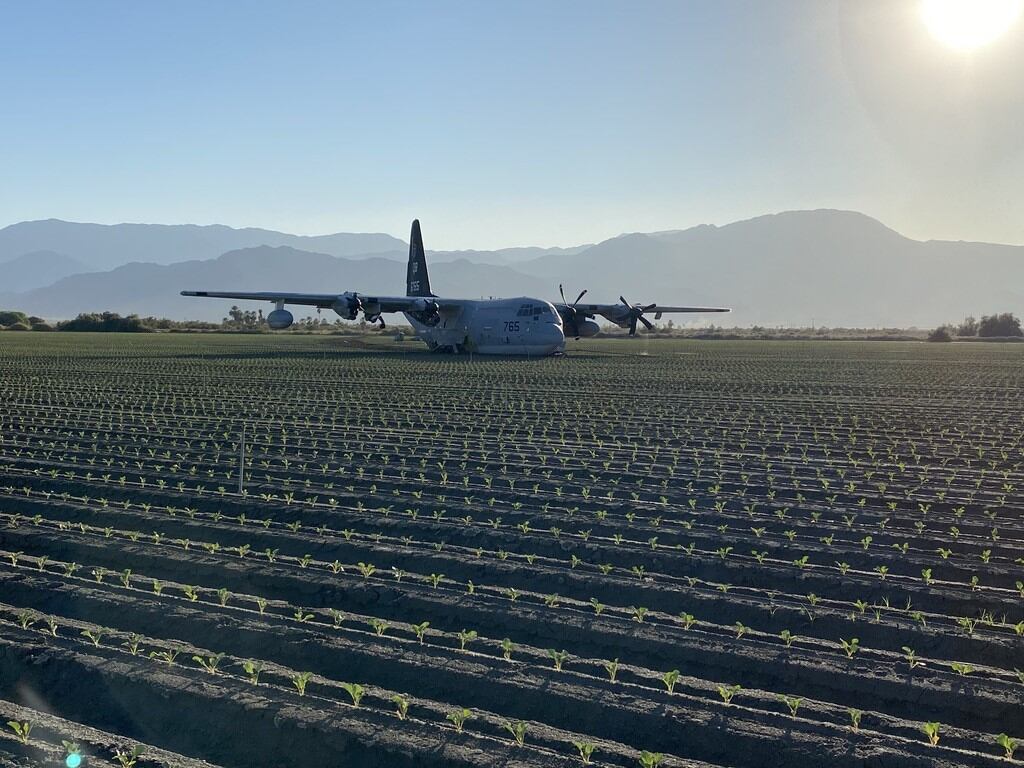
Casey had a request for his new subordinate when Jones reported to the unit ― an autograph.
The commander previously had flown the same aircraft, numbered 765 with a distinctive black tail paint scheme.
And Casey had a model of the aircraft with the same tail number that his parents had bought him as a memento.
It now bears the name of Jones, the last pilot to fly that plane.
***
One of the crew members looking out the aircraft had enough time to shout a quick warning.
“He called out, ‘closing in fast,’” Jones told Marine Corps Times.
The jet smacked the refueling plane from left to right. Jones remembers the violent impact, the master warning alarms going off and looking out of the front windshield.
“I’m saying to myself, I can’t believe this has happened,’” he said.
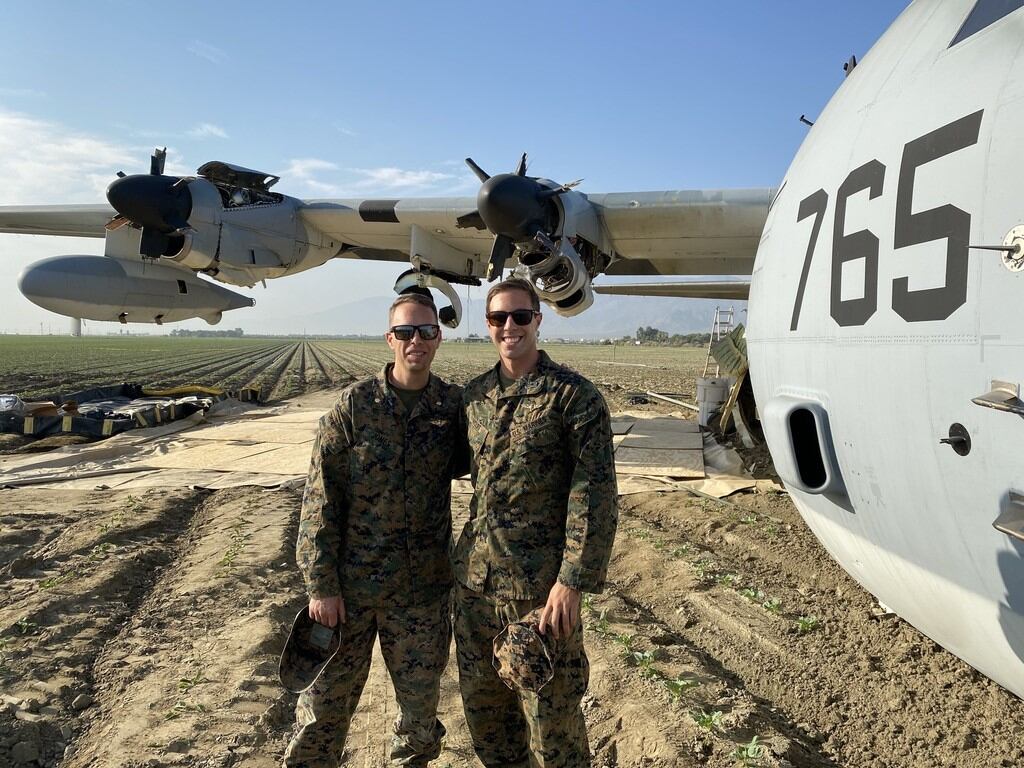
In the 1.2 seconds of that midair collision, Jones’ thoughts flashed to another incident that had an eerie echo.
That Dec. 6, 2018, flight had involved a nighttime refueling mission off the coast of Japan with a KC-130J and an F/A-18D Hornet.
The Hornet had hit the refueler, sending both planes crashing into the dark ocean, killing all on board the KC-130J and the pilot of the jet, who died after a rescue at sea. The jet’s weapons systems operator was the sole survivor.
In total, six Marines died in the incident.
After that tragedy, Jones had wondered what the Sumo 41 crew had been feeling at the time.
“Now I know, now I know what they were feeling,” he said.
***
Jones grew up near Charlotte, North Carolina, traveling not far from home to attend Eastern Carolina University to study exercise and sports science. He thought he would pursue a career working on strength and conditioning for a college football team.
While at an internship at Iowa State University, a friend in the Air Force Reserve Officer Training Corps program got him thinking. Jones had only a few military family members from his grandparent’s generation. He’d never flown anything but a motorcycle off some jumps.
But flying a military aircraft?
“I didn’t even realize the Marine Corps had airplanes,” he said.
But something about flying for the scarlet and gold appealed to him.
“I have always liked mechanical things and I’m a bit of an adrenaline junkie,” he said. “I like fast cars, sports cars, motorcycles. I just like things that kind of give you that rush. Aviation seemed to be that thing.”
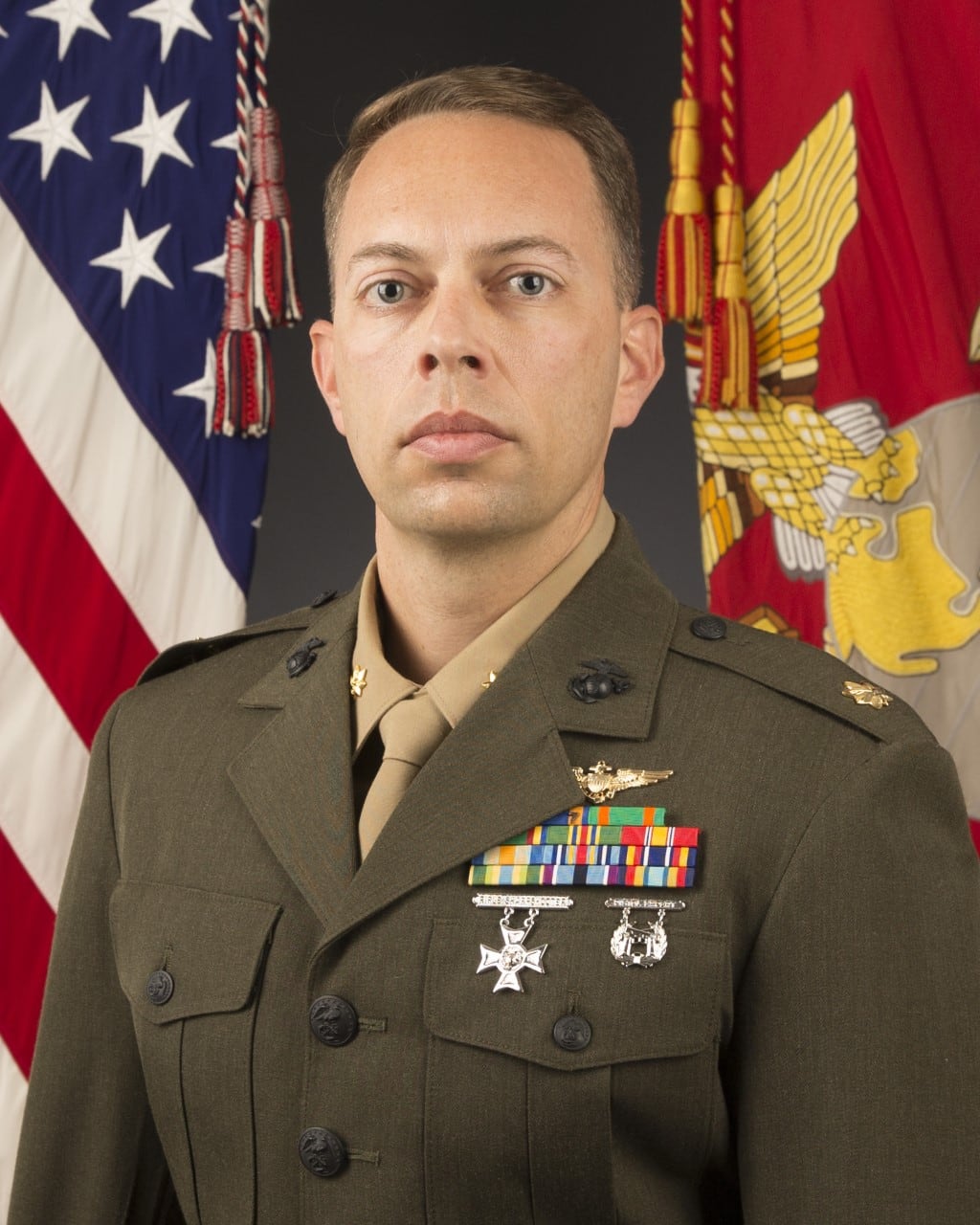
Then, on New Year’s Eve 2005 he went for a motorcycle ride.
The experienced motocross racer took a jump he couldn’t quite clear. The hard landing shattered his right arm.
That ended his military plans. Or so he had thought.
He finished his bachelor’s degree and started a personal training business. But that lingering desire, the “what if” of it all, kept nagging.
Nearly three years later, in 2009, Jones commissioned at age 26.
The young aviator wound up on the KC-130 airframe, spending time with Marine Aerial Refueler Transport Squadron 352 out of Miramar, California. Deployments took him to Kuwait, Iraq, Syria and Afghanistan.
Other flights gave him the kind of freedom a boy from small town North Carolina hadn’t dreamed existed ― stops in Greece, Germany, a New Year’s Eve in Rome.
***
The collision had knocked everyone’s headsets off. Once he got his back on, Jones heard his co-pilot, Capt. Michael Wolff, giving him the rundown.
“Number three and four engines are gone,” he said.
The instrument panel was blank for the feedback on two of the four engines that powered this beast of an aircraft, which could take off weighing 82 tons, airframe and cargo included.
They immediately began running through emergency procedures, pulling fire handles for both engines, shutting off all components.
Now, where to land this plane?
They were too far away to get back to Yuma, Arizona. The KC-130J Hercules, or “Herc” as some affectionately call it, needs those four engines; controlling it for a long distance on two wasn’t the best option.
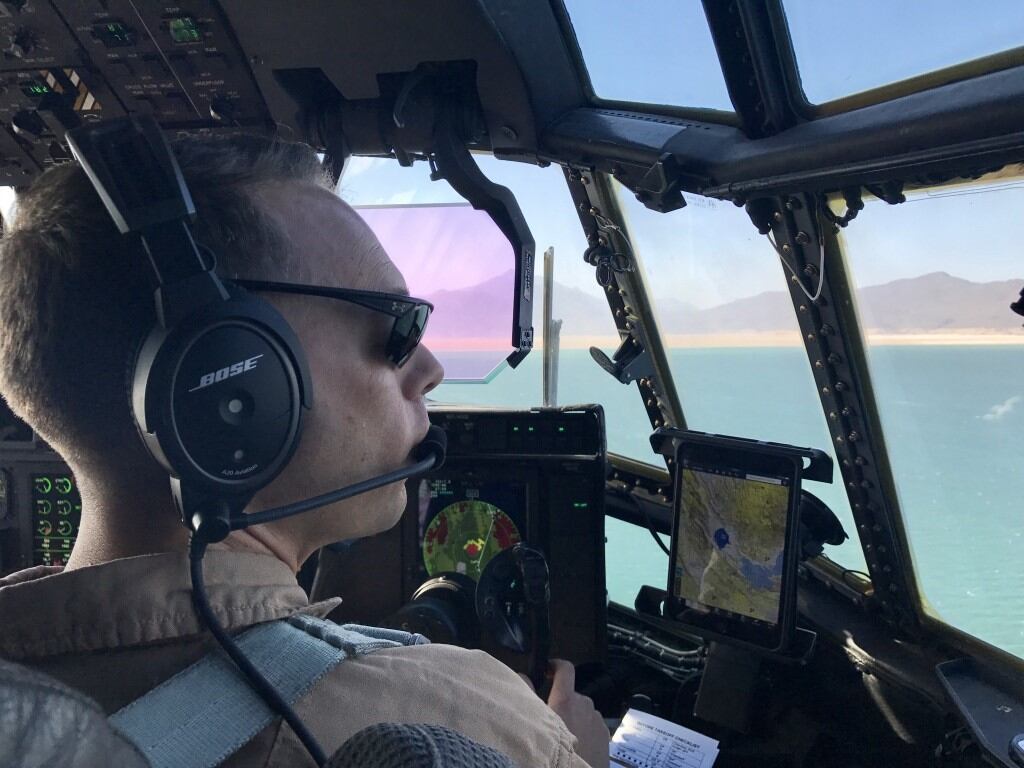
Jones had flown out of a closer airport near Thermal, California. He knew it well and turned that direction.
Then more bad news: a fire on the right-side wing.
The external fuel tank, which could hold up to 8,000 pounds of fuel, had been knocked off that side in the collision.
“With wing fires you might have 30 to 45 seconds, maybe a minute of structural integrity on the wing before fire burns through wing spars and detaches (the wing),” Jones said.
The airport wouldn’t work.
Jones skirted the Salton Sea and looked for a flat expanse on the desert floor. He took the plane down between 8,000 feet to 10,000 feet. The fire sputtered out.
He began to lower the landing gear and adjust the flaps to slow the plane.
Usually, the flaps go to 100% to land. At 20%, the plane’s still flying. The best he could manage was 50%.
The front, right-side landing wheels came down but wouldn’t lock.
“So, that’s an issue,” Jones thought. “I’ve never landed a plane with only one main landing gear. Is it going to collapse when we land on the runway?”
He told the crew members to brace themselves.
As the ground fast approached, a little luck came their way. The field had just been cultivated. Dark, soft, loamy soil lied out in neat rows and was slightly damp from recent irrigation.
It wasn’t pillow soft, but it was better than highway asphalt.
Jones held off, skimming along just above a berm before he let the plane go lower, touching down.
The plane and crew hit the deck and slid about 300 yards before coming to a stop.
“Both Mike (Wolff) and I looked at each other, not believing we could do this, that we were still alive,” he said.
They told the crew to evacuate. They didn’t have to say it twice.
But the impact had bent the fuselage, jamming the doors.
One of the loadmasters “kicked it like his life depended on it,” Jones said.
It popped open. The propellers were still spinning, and they could hear the engines winding down, as the eight Marines ran about 400 yards to a nearby road.
They shook hands, thankful to be alive, and called 911.
***
“They’re all here today because of what he and the rest of the crew did,” Casey said. “The first thing he did was give credit to the crew.”
Casey and Johnson both noted Jones’ humility, his tireless work to share the story, when asked. But only when asked.
And it makes its mark, they said.
Casey worries that because there are fewer combat missions than in the past, newer pilots can get overlook the dangers of even routine flights. Without the threat of combat looming, it’s easy to get complacent.
“The training they’re doing, it matters and if you don’t take it seriously there are dire consequences,” Casey said. “I think we’re losing some of that perspective with our younger students. So, it’s great that he’s part of the staff.”
***
There’s a footnote to this story. Pilots have call signs. We all know “Maverick” and “Goose” from the movie “Top Gun.”
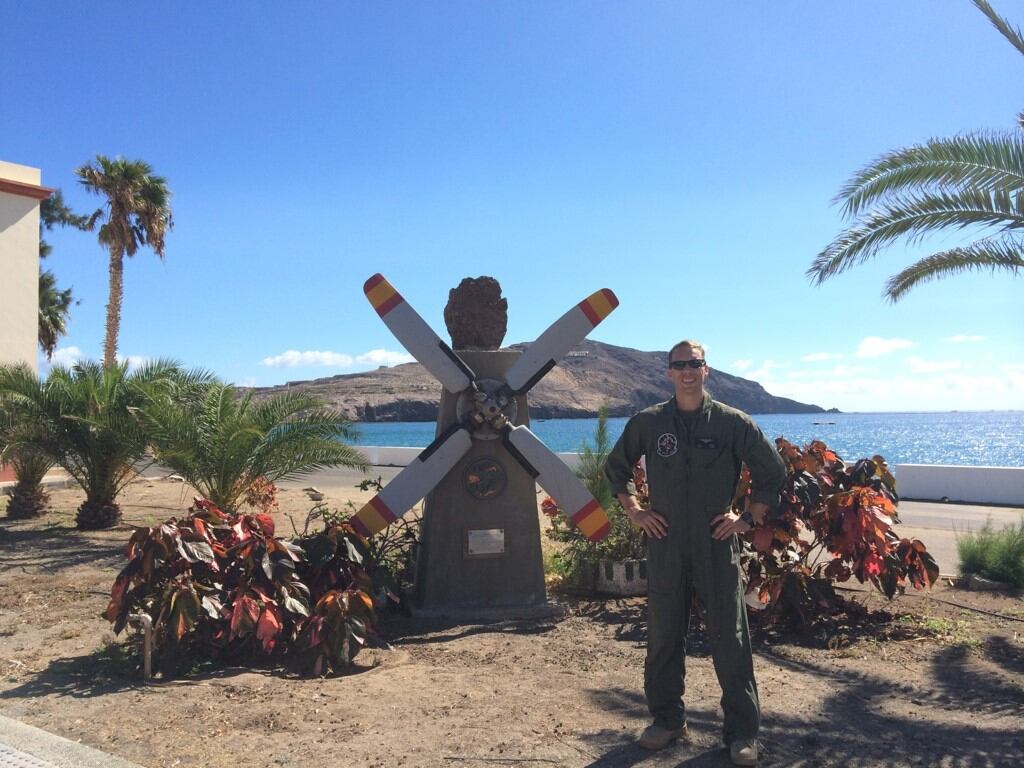
In that close culture of combat aviators, call signs are based a bit of dark humor, sometimes an inside joke on a quirky personality trait or some crazy thing the flier did while in the cockpit or out of it.
Every so often an event in an aviator’s career warrants a new nickname. Jones earned his new one with this heroic landing. He’s now known in aviation circles as Maj. Cory “CLIFF” Jones.
That’s CLIFF, or “Crash Landed In Farmer’s Field.”
When asked if there might be another call sign in his future, Jones had a quick response.
“Not given this scenario,” he said. “This should never happen again.”
Military Times’ Service Members of the Year
Coast Guardsman of the Year | Watch
Todd South has written about crime, courts, government and the military for multiple publications since 2004 and was named a 2014 Pulitzer finalist for a co-written project on witness intimidation. Todd is a Marine veteran of the Iraq War.





